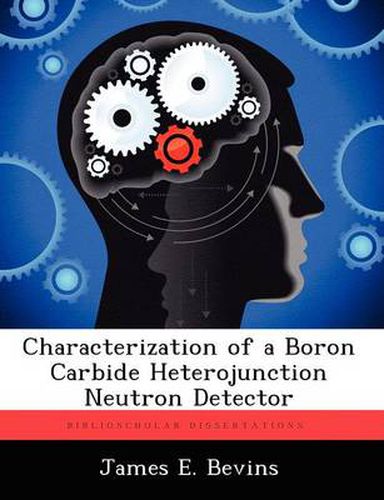Readings Newsletter
Become a Readings Member to make your shopping experience even easier.
Sign in or sign up for free!
You’re not far away from qualifying for FREE standard shipping within Australia
You’ve qualified for FREE standard shipping within Australia
The cart is loading…






This title is printed to order. This book may have been self-published. If so, we cannot guarantee the quality of the content. In the main most books will have gone through the editing process however some may not. We therefore suggest that you be aware of this before ordering this book. If in doubt check either the author or publisher’s details as we are unable to accept any returns unless they are faulty. Please contact us if you have any questions.
New methods for neutron detection have become an important area of research in support of national security objectives. In support of this effort, p-type B5C on n-type Si heterojunction diodes have been built and tested. This research sought to optimize the boron carbide (BC) diode by coupling the nuclear physics modeling capability of GEANT4 and TRIM with the semiconductor device simulation tools. Through an iterative modeling process of controllable parameters, optimal device construction was determined such detection efficiency and charge collection were optimized. This allows an estimation of expected charge collection and efficiency given a set of operating parameters that include: silicon resistivity, BC resistivity, BC thickness, silicon thickness, applied bias, and collection contact. Charge collection was maximized with high bias operation of thin BC layers on thin silicon substrates of low resistivity (lt;10 -cm), while the capture efficiency was maximized for thicker BC layers. Additionally, the effects of neutron damage on BC diodes were studied to determine damage thresholds and resulting device performance and lifetime. The major limitation found for device performance was the increase in the leakage current ( 340% at a thermal fluence of 9.7x1013 n cm-2) in the 8k -cm diode. Type inversion was not measured at the total fluence levels achieved, but the 8k -cm diode effective carrier concentrations (Neff) decreased by 30% at a total thermal fluence of 7.5x1013 n cm-2 (1x1013 1 MeV neutron equivalent). For the same irradiation conditions, the 20k -cm diode Neff
$9.00 standard shipping within Australia
FREE standard shipping within Australia for orders over $100.00
Express & International shipping calculated at checkout
This title is printed to order. This book may have been self-published. If so, we cannot guarantee the quality of the content. In the main most books will have gone through the editing process however some may not. We therefore suggest that you be aware of this before ordering this book. If in doubt check either the author or publisher’s details as we are unable to accept any returns unless they are faulty. Please contact us if you have any questions.
New methods for neutron detection have become an important area of research in support of national security objectives. In support of this effort, p-type B5C on n-type Si heterojunction diodes have been built and tested. This research sought to optimize the boron carbide (BC) diode by coupling the nuclear physics modeling capability of GEANT4 and TRIM with the semiconductor device simulation tools. Through an iterative modeling process of controllable parameters, optimal device construction was determined such detection efficiency and charge collection were optimized. This allows an estimation of expected charge collection and efficiency given a set of operating parameters that include: silicon resistivity, BC resistivity, BC thickness, silicon thickness, applied bias, and collection contact. Charge collection was maximized with high bias operation of thin BC layers on thin silicon substrates of low resistivity (lt;10 -cm), while the capture efficiency was maximized for thicker BC layers. Additionally, the effects of neutron damage on BC diodes were studied to determine damage thresholds and resulting device performance and lifetime. The major limitation found for device performance was the increase in the leakage current ( 340% at a thermal fluence of 9.7x1013 n cm-2) in the 8k -cm diode. Type inversion was not measured at the total fluence levels achieved, but the 8k -cm diode effective carrier concentrations (Neff) decreased by 30% at a total thermal fluence of 7.5x1013 n cm-2 (1x1013 1 MeV neutron equivalent). For the same irradiation conditions, the 20k -cm diode Neff